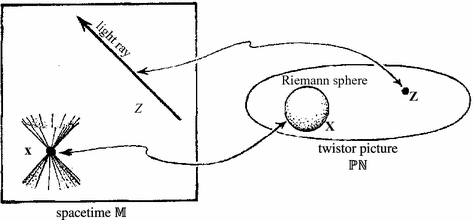There’s a new popular book out about number theory by the team of Avner Ash and Robert Gross, entitled Summing It Up: From one plus one to modern number theory. This is the third such book that they have written, and I’m embarrassed that it seems that I never reviewed the other two here. All three are highly recommended for anyone who wants a popular book-level introduction to some of the central topics of modern number theory.
- Summing It Up is the latest of the three, but it’s also the most elementary. It’s an introduction to the subject of modular forms, starting at the very beginning. The first half of the book covers in detail some basic ideas about number theory that can be understood in elementary terms, including things like the problems of counting the ways an integer can be a sum of squares or higher powers, or partitioned as a sum of smaller integers. The second half of the book tries to explain in as simple and concrete terms as possible what a “modular form” is, and what some of the properties of such objects are.
I’ve just finished teaching a graduate course on representation theory, and ended up the course with a short discussion of the representations of the group SL(2,R) (two by two real matrices of determinant one), and what this had to do with modular forms. The relation of modular forms to representation theory (not discussed in the book) is roughly the following. The action of SL(2,R) on itself by left multiplication induces an action on functions on the quotient space SL(2,R)/SL(2,Z) (elements of SL(2,Z) are matrices with integer entries) and one can ask how this representation decomposes into irreducible representations, with modular forms providing part of the answer. How this works is quite basic to our modern understanding of how representation theory and number theory are related.
In the last few chapters the authors try to explain how modular forms answer concrete counting questions raised in the first half of the book. A problem with trying to do this kind of thing is that while the questions may be straightforward to state, and the basic definitions of modular forms relatively accessible, connecting the two requires invoking some subtleties (half-integral modular forms). The authors several times apologize for not being able to explain exactly what is going on. I’ve always been quite fascinated by these particular subtleties, since they appear in the basic relationship of representation theory and quantum mechanics. The half-integrality here is related to the half-integer that appears in the ground-state energy of the harmonic oscillator. For quite a bit about how this is related to representation theory, see the book I’ve been working on. I’d love some day to write about the relationship of the ideas that appear in quantum mechanics to the ones that appear in modular forms, but first of all I need to understand myself much better what is going on.
- The first of the three books by Ash and Gross was Fearless Symmetry: Exposing the Hidden Patterns of Numbers, published in 2006. It’s perhaps the best place to start for a popular introduction to the Langlands program and what it says about the relationship of number theory and representation theory. Modular forms make a brief appearance in that book, where an explanation of them had to be skipped over due to a lack of space. The newest book makes up for that omission.
- The second of the three books was the 2012 Elliptic Tales: Curves, Counting, and Number Theory. It covers in detail the topic of elliptic curves and their role in number theory, aiming at a description of one of the main open problems of the subject, the conjecture due to Birch and Swinnerton-Dyer. This is a very active subject of current research, with significant progress being made. If one had to guess which of the Millenium Problems will be the next to fall, this might be a good bet.
While there’s a long tradition of popular books about number theory, these typically emphasize elementary methods for solving problems, ones that can be understood without a lot of the modern machinery. The first two Ash-Gross books do a good job of trying to give some insight into this modern machinery, even though a popular book can only do this in a very limited way (just as popular physics books can only give a very limited explanation of quantum field theory). The new one is different in that it makes a serious effort to explain exactly what is really going on, although following this path means that the book can only cover the first steps in the direction of modern techniques for understanding number theory.


